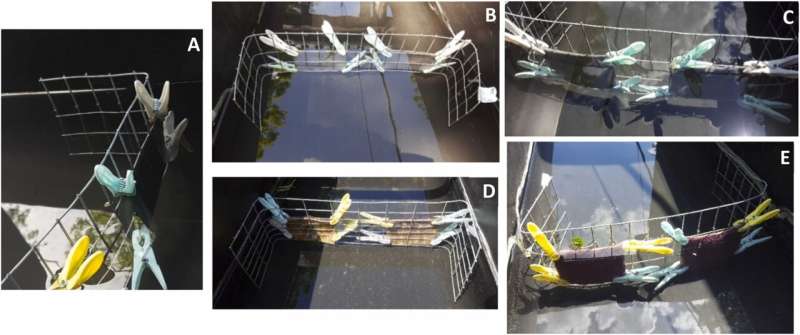This article has been reviewed according to Science X's editorial process and policies. Editors have highlighted the following attributes while ensuring the content's credibility:
fact-checked
peer-reviewed publication
trusted source
proofread
Study shows forensic evidence can survive underwater for weeks

Forensic fibers can survive underwater for much longer than previously thought—which could help criminal investigators uncover vital evidence.
New research led by Staffordshire University's Centre for Crime, Justice and Security has found that fiber evidence can survive on fabrics underwater for several weeks.
Claire Gwinnett, Professor of Forensic and Environmental Science, explained, "Evidence, such as weapons and victim's bodies, are often found in aquatic environments including rivers and lakes."
"However, if items have been submerged in water for more than seven days then many forensic examiners believe that any valuable trace evidence will be gone and won't seek it out."
To date, very few studies have investigated fiber persistence on fabrics submerged underwater. The dynamic nature of aquatic environments mean that the studies are difficult to conduct in situ and variables, such as water flow rate, are not possible to control.
The Forensic Fiber Freshwater (3F) project was conducted in partnership with Lunz Mesocosm Infrastructure (LMI), WasserCluster Lunz, the University of Vienna and Italy's University of Milano-Bicocca.
This study used artificial streams, known as mesocosms, to investigate the persistence rate of polyester fibers on different fabric types over a four-week exposure time.
Usually used for ecological research, this is the first time that mesocosms have been employed to look at forensic evidence.
Two flow velocities, high and low, were used on three textiles: woolen/nylon mix carpet, 100% polyester fleece, and 95% polyester/5% elastane sports vest.
Initial loss rates were highest for the first hour of submergence for the carpet, fleece and sports vest. However, persistence rates remained mostly constant after 24 hours for all textiles and the two flow rates used did not significantly affect fiber persistence.
Ph.D. researcher Afsané Kruszelnicki said, "It would be expected that a higher flow rate would have a lower number of retained fibers compared to a lower flow rate, yet no significant difference was seen in all but one condition."
"Even after four weeks, the lowest percentage of remaining fibers was 33.4%. This clearly indicates that it is extremely valuable to search for fiber evidence even after a long exposure time."
Professor Gwinnett said, "Our findings could change how police direct investigations and help to uncover forensic evidence that was previously thought to be lost. We hope this will help investigators to identify more suspects and ultimately lead to more convictions."
"The study also highlights the benefits of using mesocosms which mimic realistic aquatic environments in a controlled setting. This is the first time that mesocosms have been used to look at forensic evidence and we hope it will pave the way for further studies to investigate different types of trace evidence such as gunshot residue, pollen, fingerprints or DNA."
Dr. Katrin Attermeyer, coordinator of the stream mesocosms in Lunz am See and aquatic microbial ecologist at WasserCluster Lunz and the University of Vienna, added, "This interdisciplinary collaboration between forensic scientists and aquatic ecologists has not only provided insights into other sciences, but has also shown that mesocosms, traditionally used to answer ecological questions, are a valuable asset to other research areas such as forensic sciences."
The findings are published in the journal Forensic Science International.
More information: Afsané Kruszelnicki et al, An investigation into the use of riverine mesocosms to analyse the effect of flow velocity and recipient textiles on forensic fibre persistence studies, Forensic Science International (2023). DOI: 10.1016/j.forsciint.2023.111818
Journal information: Forensic Science International
Provided by Staffordshire University





















